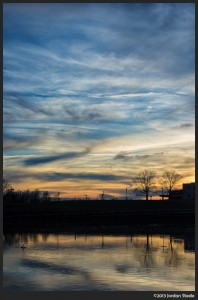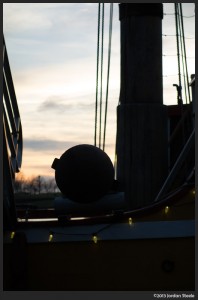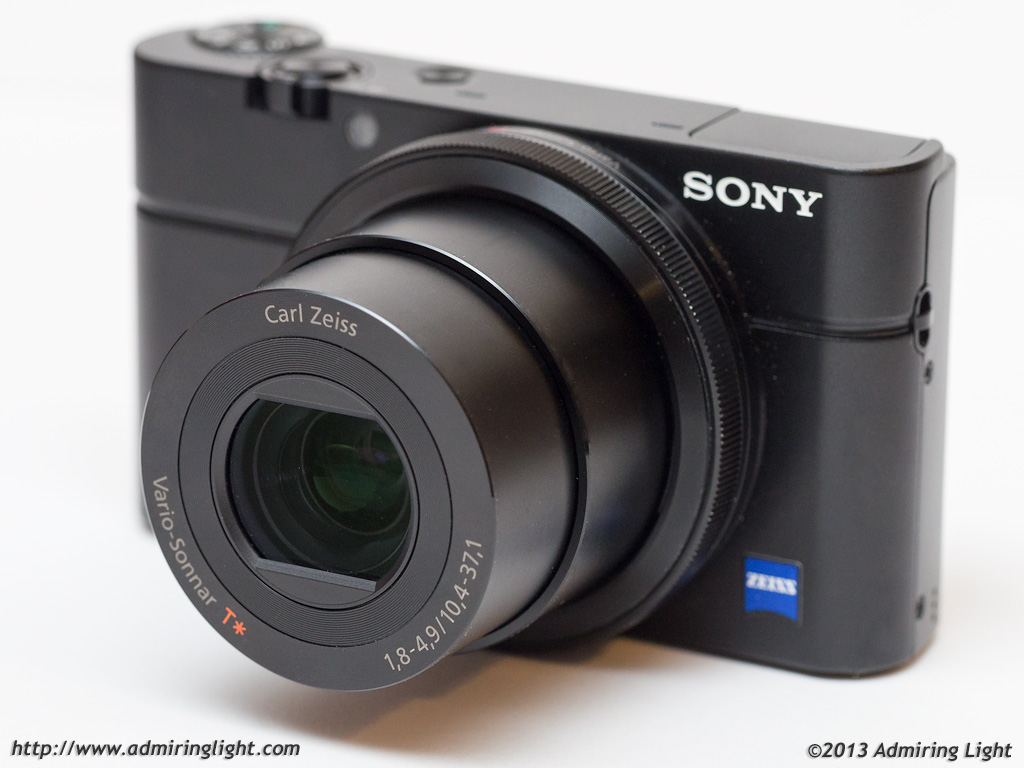Image Quality: Lens Quality

The lens on the Sony RX100 covers a fairly standard zoom range for compacts, from moderate wide angle to short telephoto. It starts with a very bright f/1.8 aperture on the wide end, but darkens to a more modest f/4.9 at the long end of the zoom. Overall sharpness from the lens was quite good, with impressive detail over the central part of the frame at all focal lengths. However, at the edges of the frame, the lens softens, so critically sharp corner to corner images aren’t going to be a real possibility.
The lens’ biggest weak area is in chromatic aberration control. There is visible lateral CA, especially visible in the corners, though this is mostly correctable in most RAW programs. The lens suffers from purple fringing on very bright edges as well, and visible longitudinal chromatic aberration is also apparent when shooting with narrow depth of field. Still, these flaws are one of the compromises made when shooting with an all-in one compact camera. Overall, the lens quality is better than most compacts I’ve used in the past.
I will say that the aperture range and focal range do lend the RX100 to be a jack of all trades sort of camera. It is a very useful range, and due to the large sensor and wider apertures, you can even get a fair amount of subject separation, similar to what you’d get with a kit zoom on Micro 4/3. It’s not going to blur the background like crazy, but it’s definitely better than most point and shoots. The bokeh from the RX100’s lens is relatively good for a zoom lens. Out of focus areas are rendered fairly neutrally, with few major aberrations to speak of.
One disappointment for me was the lens’ macro mode. At the wide end, you can focus down to 2″. Unfortunately, image quality is pretty poor at this setting, with overall image softness and lots of glow. Also, the minimum focus distance at the long end is a disappointing 21.7″.
Image Quality: Color and Dynamic Range
The RX100 produced images with a relatively low-key color profile straight out of camera. I really didn’t mind this because the files, especially the RAW files at low ISO, take adjustment very well, allowing for rich color at low ISOs. RAW files are low contrast out of camera, with the JPEGs being a bit punchier on default settings.
With a relatively large Sony sensor inside, the RX100 has surprisingly good dynamic range. While there isn’t as much highlight headroom in the RAW files as many other cameras, the total dynamic range is excellent, with the ability to bring shadow details out tremendously in post. See the example below: The image on the left is the RAW file straight out of camera at Adobe Lightroom defaults. The right image shows the amount of actual data in the file…I was able to recover a huge amount of detail in the shadows. Click on each to enlarge the image. While not quite up there with the very best mirrorless cameras in this regard, it’s not far behind. Very impressive.
 |
 |
Image Quality – Noise
The RX100 performs significantly better than the average compact camera, and very close to most mirrorless compact system cameras. Its 1″ sensor is capable of low noise images at base ISO up to about ISO 400. Above ISO 400, the images start to take on some grain, but I found ISO 1600 to be quite usable. ISO 3200 can yield good small prints or web reductions, but it’s a little too noisy for larger work. ISO 6400 is a step too far, and yields very noisy images with very little detail.
Still, the ability to shoot quality images at high ISO makes this a great take anywhere camera. It can perform well in lower light and makes very high quality images at lower ISOs. Overall, I’d say the noise performance is on the level of early Micro 4/3 cameras, such as the Olympus E-P1.
The JPEG quality out of the RX100 is also quite impressive. While I am primarily a RAW shooter, I felt I could easily shot JPEG exclusively and gotten good images. You give up some of the dynamic range, of course, but images retained a good level of detail with very minimal compression artifacting and a good balance of detail and noise suppression at higher ISOs.
Video
While I did not take a lot of video, as I’m not much of a videographer, I did take several sample videos. The RX100 is capable of 1080p output at 30 frames per second, and the video output is outstanding. Low noise, high detail video, and frankly, this is where the in-lens stabilization really shines. It was very easy to make smooth videos handheld without the jitters often seen in compact camera video recordings. The lens zooms very smoothly and quietly, and autofocus works rather well.






Leave a Reply